Chevrolet Camaro
-
2021 Chevrolet Camaro Turbo 1LE First Test: Its Own Thing
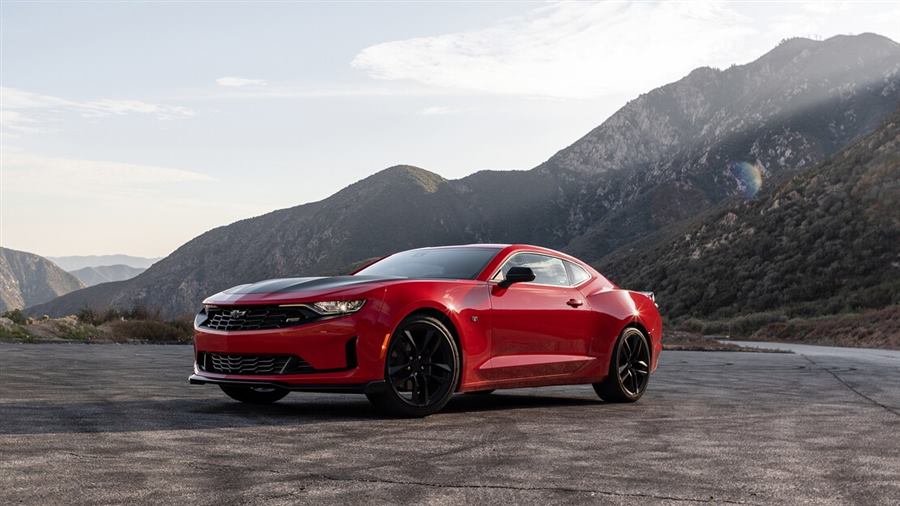
The four-cylinder 1LE delivers amazing handling and no messy tire smoke.
It seems that nearly every review of the Chevrolet Camaro compares it to the Ford Mustang and Dodge Challenger, and with good reason—these three nameplates are historic foes going back 50 years. Well, Constant Reader, that won't happen today, because the subject of this test is the four-cylinder 2021 Chevrolet Camaro Turbo 1LE, an endangered species that combines the Camaro's smallest engine with the SS model's suspension.
Truth be told, a read of the spec sheet had us thinking that this Camaro's natural enemies might be sport compacts like the Hyundai Veloster N and Volkswagen Golf R. Its 275-hp 2.0-liter turbo I-4, six-speed manual, and emphasis on handling over tire-smoking power would put it in the ballpark, we thought, but a couple weeks of real-world driving disavowed us of this notion. The Camaro 1LE has a very different character than a hot hatch. But it also has a very different character than the brawnier Camaros we've driven. We came away with likes, dislikes, a lot of respect—and a newfound notion that a Camaro equipped like this one really is its own unique thing.
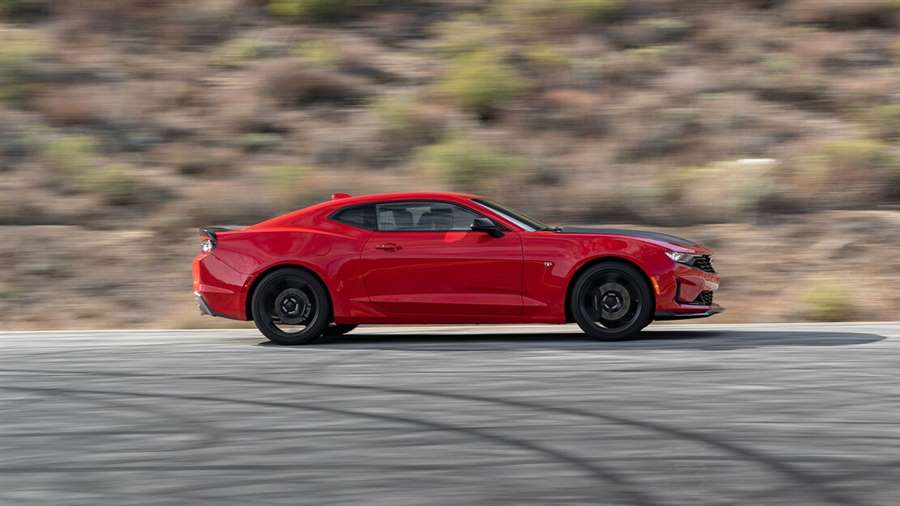
First, a little more about the Camaro 1LE. This is a track performance package that combines FE3 suspension components from the V-8-powered SS with four-piston Brembo front brakes, a mechanical limited-slip differential, a 3.27:1 final drive ratio, a short-throw shifter, and coolers for the engine oil, transmission, and rear differential. The V-6 Camaro 1LE also gets an extended engine cooling system and dual-mode exhaust. The 1LE's exterior elements include a black hood, black lightweight wheels, Goodyear Eagle F1 run-flat summer tires, and (strangely) RS badging.
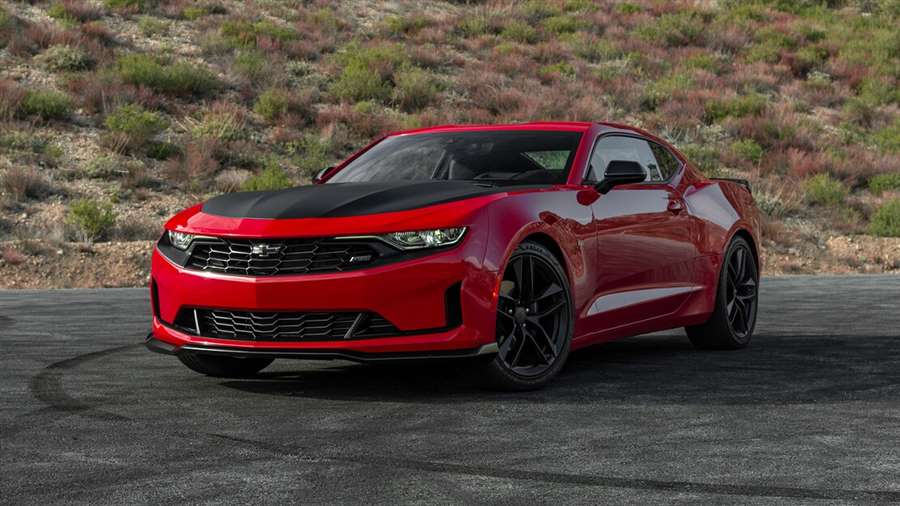
Turbo Four Is Small But Potent
As mentioned, our Camaro 1LE had the 2.0-liter turbo engine, which is the Camaro's smallest but not exactly its least potent. Although the 3.6 liter V-6 beats it on horsepower, with 335 to the 2.0T's 275, the four-cylinder's 295 lb-ft out-torques the six by 11 lb-ft. That said, the 2.0T is slower to 60 mph than either the V-8 (4.1 seconds with an automatic transmission) or the V-6 (5.0 flat with a manual). But a 5.6-second 0-60 time means the 2.0T hardly needs to apologize for its small displacement.
We found we could get quicker acceleration times by launching ourselves (revving to 4,000 rpm before dropping the clutch) rather than using launch mode. The no-lift-shift feature—in which you can keep the accelerator pinned to the floor while you shift gears, and the ECU will keep the revs where they need to be—proved to be a big help, as did the racing-style shift indicator on the head-up display.
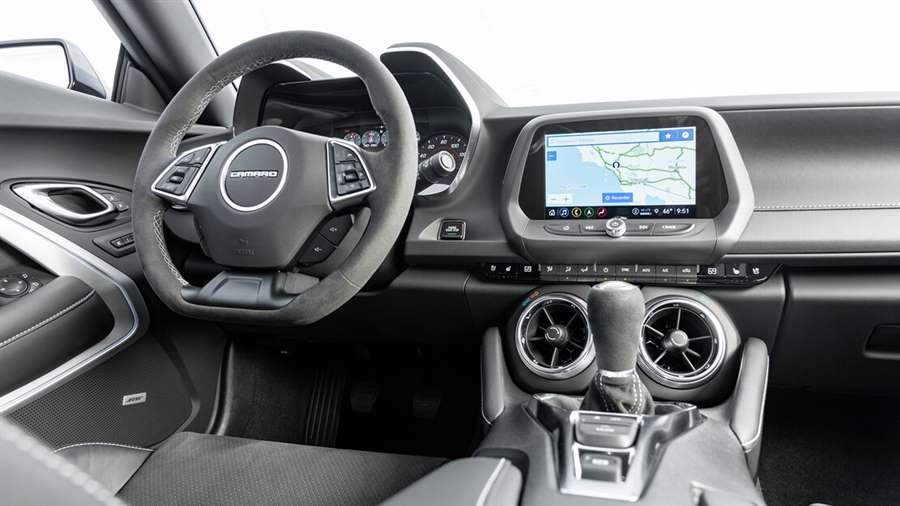
One quirk of the four-cylinder Camaro 1LE is its ridiculously tall gearing. Sixth gear is so high that it literally lugs the engine at 65 mph. Short of investing in a new gearbox, we suppose Chevrolet could fit a shorter final drive and improve the Camaro's sprinting ability, but then you'd run out of revs in first gear way too quickly. The gear spread and speed ranges feel perfect just the way they are, so we can live with a sixth gear that is only for cruising on superhighways. We rarely shifted above fifth and still managed better than 20 mpg.
1LE Means This Camaro Can Handle
But the 1LE is all about handling, and it was out on our favorite twisty roads that our affection for this particular Camaro really blossomed—and the differences between it and our favorite hot hatchbacks started to emerge. A good sport compact attacks the curves with a big, stupid grin, but the Camaro wears the concentrated grimace of a professional. It's not joyless, just focused.
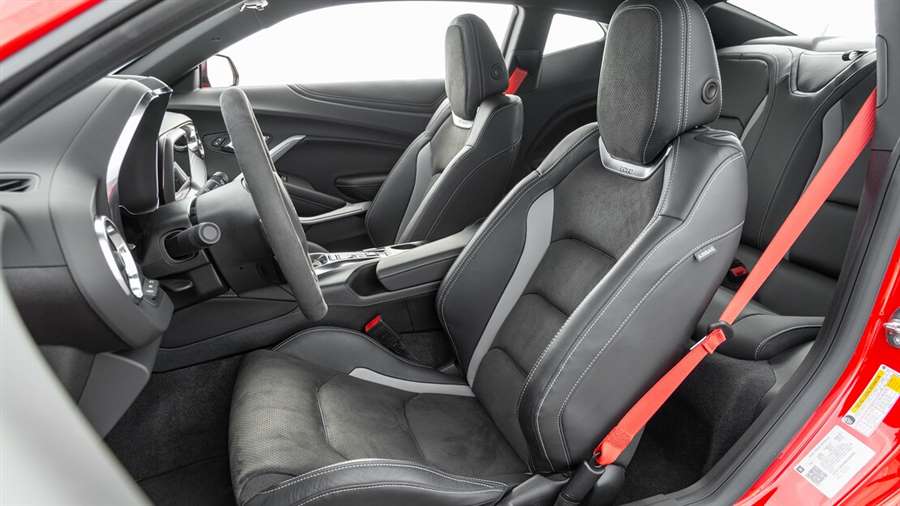
Like a good hot hatch, the Camaro's limits are high but accessible. It grips with heroic tenacity, though we were amused to note that on the skidpad, it was grippier in right turns (1.03 g average) than left turns (0.98 g average), something left-to-right weight distribution (49.9/50.1 percent) doesn't seem to explain—especially with the driver further loading the left side. Out on the open road, if you get cute and try to provoke the Camaro 1LE, it'll let go in an instant, especially if the tires are cold—but the telepathic connection between driver and car is so good that you'll likely have it gathered up just as quickly.
One of the key arguments in favor of the four-cylinder 1LE over other Camaro models is reduced weight on the nose, though we're not sure there's much real-world difference. Our test car weighed precisely 100 pounds less than the last V-6 manual Camaro we tested, but front/rear weight distribution was identical at 52%/48%. It's a different story compared to the V-8, which carries 54 percent of its weight on the front wheels.
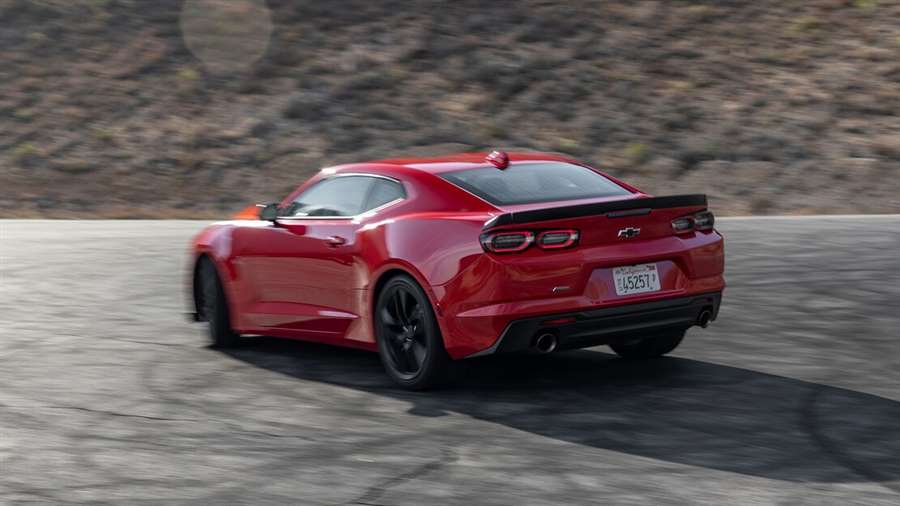
But whatever conversations are happening between the Camaro 1LE and Sir Isaac Newton, what the driver experiences is some kind of magic. Turn-in is buttery-smooth, and once in the curves the feedback from the steering is wonderful, with the front tires serving as your eyes and ears on the road surface. Rolling out of a turn, the steering does its best to guide you back to straight and true as you experience another benefit of the four-cylinder engine: You can open the throttle wide with no worries of the rear tires breaking loose and introducing an unwanted variable into your driving equation. Drag race with the V-8, but if your ideal road is curvy rather than straight, the 2.0T is the engine you want.
That is, most of the time.
Here's the problem: As much as we enjoyed, liked, and admired the four-cylinder Camaro 1LE on the curvy roads, it wasn't the fun-loving daily driver we were hoping for.
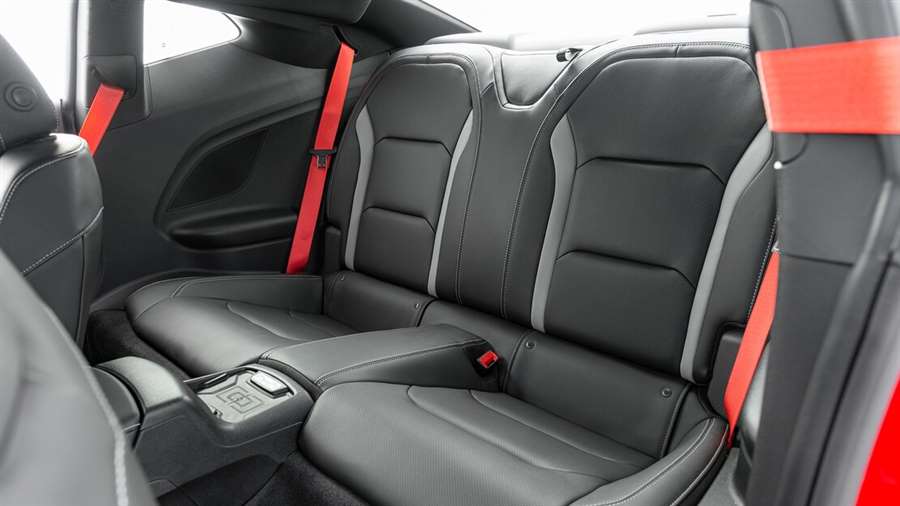
We all know the Camaro's built-in foibles: terrible outward visibility, awkward ingress and egress (exacerbated by our test car's $1,595 Recaro bucket seats), a strictly theoretical back seat, and a pint-sized trunk. That's not what we're talking about. And although it's easy to bag on the Camaro's cabin, we can't fault the ergonomics, driving position, or control layout. The touchscreen infotainment system is straightforward and easy to learn, and we love the climate controls—the idea of turning the chrome rings surrounding the vents into temperature controls is pure Joe Cool genius.
Our problem is that, unlike our favorite hot hatchbacks, the day-to-day driving experience is a bit, well, bleak. The 1LE isn't offered with an automatic transmission, which we love—but even for die-hard stick-shifters like us, the Camaro's heavy clutch and intractable shifter crowd the line between cheer and chore.
Sound, Or Lack Thereof
But the turbo Camaro's worst sin is its awful engine note. We know that a four-cylinder engine can't generate the deep rumble of a V-8, but with this 2.0T, it's as if GM's engineers didn't even try to make it sound good. Below 4,500 rpm all it can manage is an insipid, uninspired buzz that is too characterless to be called flatulent. Seriously, we cannot overstate how awful this engine sounds. We attempted to convey this to a car-enthusiast friend who expressed disbelief that any engine could sound as bad as we described—until we took him for a ride.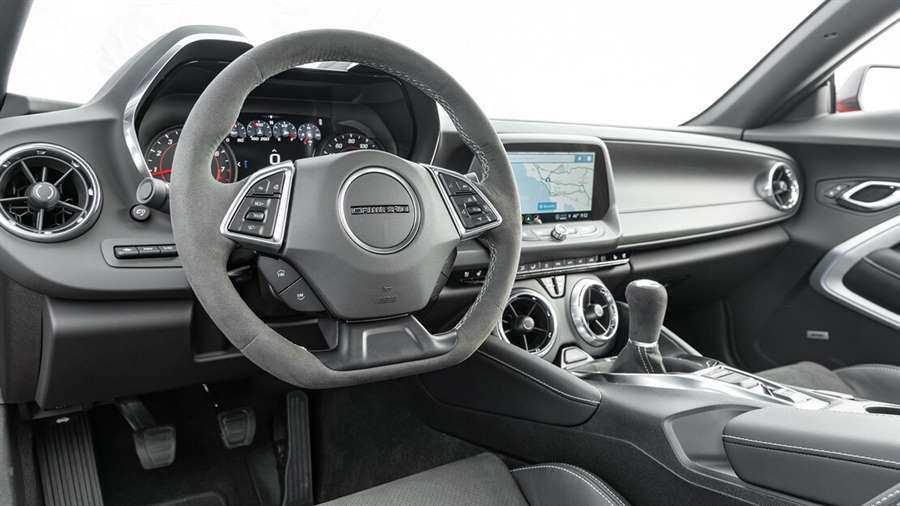
It's only in the top 1,000 rpm or so of its rev range that the Camaro's engine shows some aural promise, but given the flat torque characteristics and tall gearing, there's rarely any reason to rev it into the stratosphere. Come on, Chevrolet—Honda has been building awesome-sounding four-cylinders for decades. Even the Hyundai Veloster N makes better noises. We're giving you detention until you can work out how to make this thing sound like what it is—an honest-to-goodness performance engine.
Herein lies our one major issue with the four-cylinder Camaro 1LE: Not to keep dragging Hyundai into this, but the Veloster N is good fun whether you're tearing up the curves or running your kids to school. The Camaro is great when it's running hard, but we want it to be that much fun all of the time.
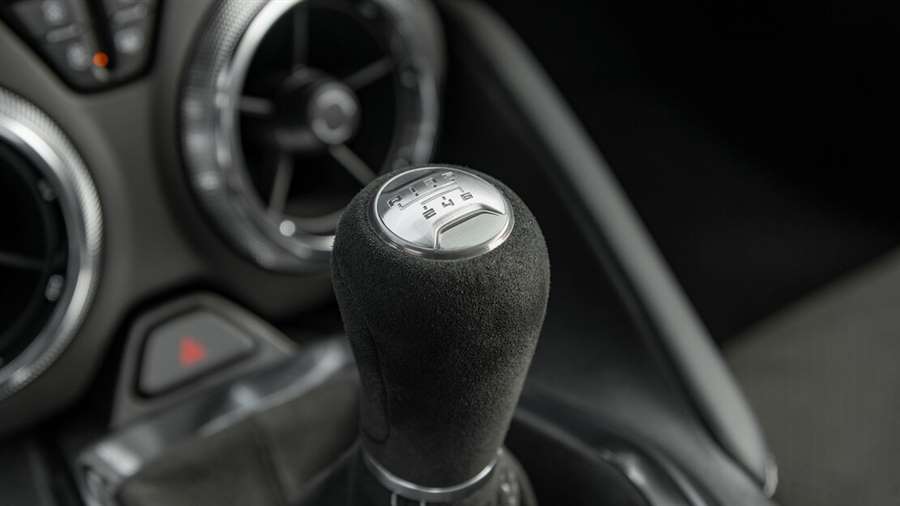
Would that make it a better car? It would be a more engaging one, to be sure, but perhaps that isn't what Chevrolet had in mind. The 1LE is, after all, meant to be a track package. What the four-cylinder Camaro 1LE does best is prove that the Camaro is truly a multitalented vehicle. It's not just a muscle car, and it's not quite a sport compact. Instead, the 2021 Chevrolet Camaro 1LE Turbo is truly its own thing—and that thing is pretty darn talented.
(motortrend.com)
-
The Chevrolet Camaro is recording declining sales results
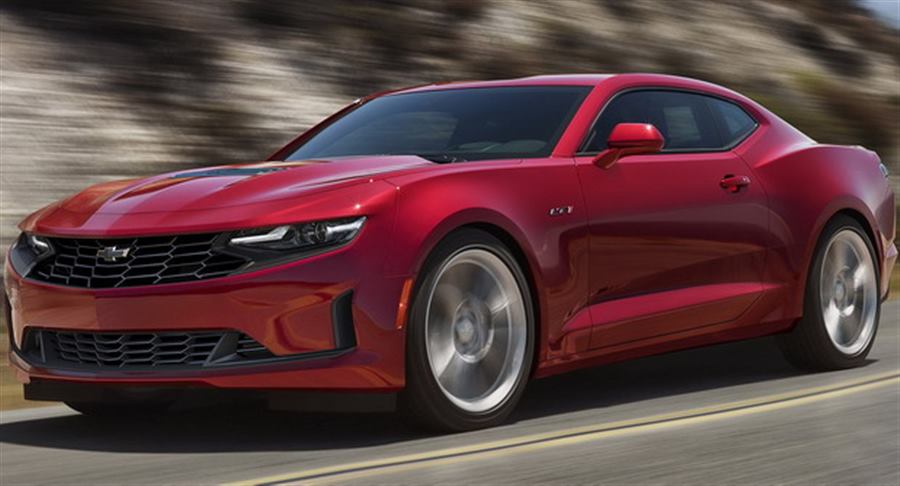
Probably the most popular American "muscular" car is the Chevrolet Camaro, and this year it recorded very poor results.
According to B92, only 29,775 copies of the Camar were sold, which is 38.9 percent less than a year earlier. Certainly, the coronavirus pandemic has affected sales results, but it seems that interest in this model is declining.
For example, the Challenger model had a good year and 52,955 units were sold.
Ford has not yet been announced in the vicinity of the sale of the Mustang, but it is believed that there are about 60,000 copies, since 47,637 copies of that car were sold in October.
-
You’ll never guess what the Chevrolet Camaro is having trouble with
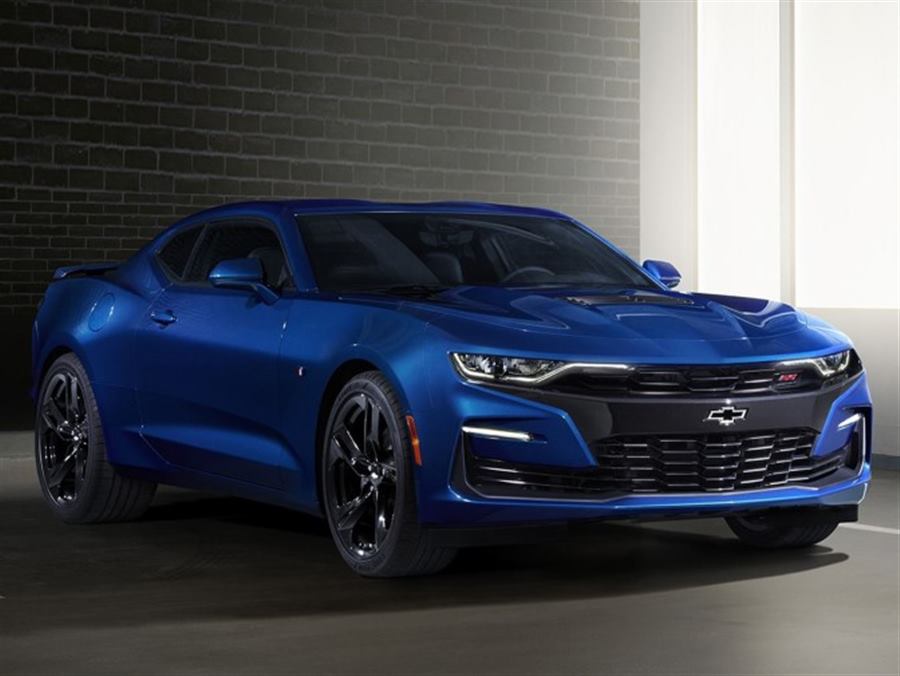
No… It's not a click-bait title, but this short story is so shifted at its core that it was not clear to me who was still in "Aprilililili mode".
Basically, here are short stories about this American nebula…At the beginning of this and still current in 2021, Chevrolet went public with a somewhat strange announcement.
And on that occasion it was said that "Due to restrictions in California and Washington relating to copper brake pads, customers in those states cannot order Camaro SS, ZL1 and 1LE for delivery after January 1, 2021."
All of this was nicely and concretely stated and signed by Mr. Kevin M. Kelly as Senior Communications Manager at General Motors.And the reason for this beautiful announcement comes down to one of the most silly studies and assumptions that have ever emerged in the world of cars. Because according to some research conducted within these two states, the Chevrolet Camaro in its SS, ZL and 1LE derivatives releases copper into the atmosphere from its brake pads. And then that copper can come in contact with water surfaces and bother salmon.
Yes… You read that right: Camaro are not sold in California and Washington because of salmon.
Because of faking salmon!The explanation of this theory states that by wearing brake pads, copper is released into the atmosphere, and some of these particles end up in waterways. So as copper itself is toxic to salmon, it has prompted lawmakers to limit the use of copper in brake pads. Or to simply stop offering models that have copper as a component in their brake pads. That is, models whose brake pads have more than 5% copper within the total ratio of the materials of which they are made.
So as the Chevrolet Camaro in its derivatives uses copper as a component of which the brake pads are composed, so the Camaro in question from 1 January 2021 may not be sold in these two above-mentioned countries.But that's not all.
Because they are Americans after all, so more dramaturgy is needed for this story…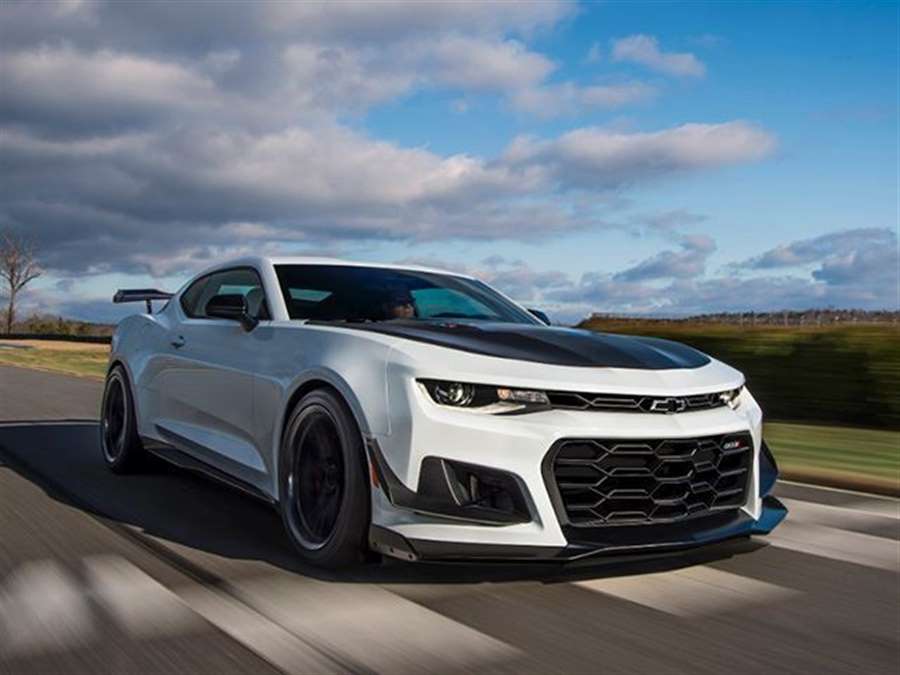
Namely, with the exception of copper present in the brake pads, it is badly considered and the abolition of certain types of tires is also not in line with waterways and salmon that swim on them. Because some of the tires use the antioxidant designation 6PPD-Quinone. And that bad antioxidant is responsible for the streams and rivers where it ends up during tire wear on a paved surface.
So now I'm just waiting to see the list of manufacturers and models of tires that kill salmon with their particles. And then I go to support the murder of a few more and buy a can containing at least part of it. Because it is as meaningless a reaction to this kind of news as the news itself is the meaninglessness of today's life on the road.And it is only a matter of time before eco-mentalists in our region will realize that, for example, driving a Golf "deuce" poses a danger to the development of pulmonary alveoli on salamanders. Or that buying cheaper winter tires negatively affects the sex life of earthworms.
And then we are again followed by bans, regulations and penalties which, like the last jerks, will fill the state budget.Wonderful, isn't it ?!










